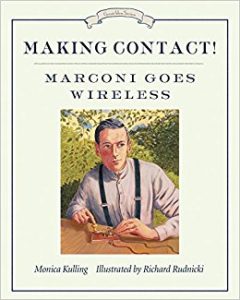 As a boy, Marconi loved science and invention. Born in 1874 in Bologna, Italy, to a wealthy family, Marconi grew up surrounded by books in his father’s library. He was fascinated with radio waves and learned Morse code, the language of the telegraph. A retired telegraph operator taught him how to tap messages on the telegraph machine. At the age of twenty, Marconi realized that no one had invented a wireless telegraph. Determined to find a way to use radio waves to send wireless messages, Marconi found his calling. And, thanks to his persistence, on December 12, 1901, for the first time ever, a wireless signal traveled between two continents.
As a boy, Marconi loved science and invention. Born in 1874 in Bologna, Italy, to a wealthy family, Marconi grew up surrounded by books in his father’s library. He was fascinated with radio waves and learned Morse code, the language of the telegraph. A retired telegraph operator taught him how to tap messages on the telegraph machine. At the age of twenty, Marconi realized that no one had invented a wireless telegraph. Determined to find a way to use radio waves to send wireless messages, Marconi found his calling. And, thanks to his persistence, on December 12, 1901, for the first time ever, a wireless signal traveled between two continents.
science
On A Beam Of Light
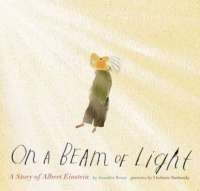
A boy rides a bicycle down a dusty road. But in his mind, he envisions himself traveling at a speed beyond imagining, on a beam of light. This brilliant mind will one day offer up some of the most revolutionary ideas ever conceived. From a boy endlessly fascinated by the wonders around him, Albert Einstein ultimately grows into a man of genius recognized the world over for profoundly illuminating our understanding of the universe.
Origin
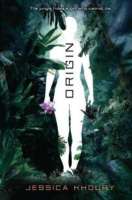
Pia has grown up in a secret laboratory hidden deep in the Amazon rain forest. She was raised by a team of scientists who have created her to be the start of a new immortal race. But on the night of her seventeenth birthday, Pia discovers a hole in the electric fence that surrounds her sterile home–and sneaks outside the compound for the first time in her life. Free in the jungle, Pia meets Eio, a boy from a nearby village. Together, they embark on a race against time to discover the truth about Pia’s origin–a truth with deadly consequences that will change their lives forever.
Ibn Al-Haytham: First Scientist
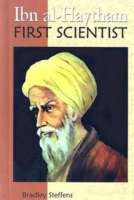
Ibn al-Haytham (“Alhazen” in Library of Congress cataloging) was born in Basra in 965. A Muslim who studied the works of Aristotle, Euclid, Archimedes, and Ptolemy, he developed an approach to science using experimentation and deduction and made significant observations and discoveries, particularly in the field of optics. Translations of his books influenced medieval European scientists and mathematicians from Bacon to Fermat to Kepler. Steffens notes that al-Haytham’s discovery of the cameraobscura may have changed Western art as well. Steffens has organized what is known of his subject’s life and work into a coherent narrative. He is quick to acknowledge gaps, but backs up inferences logically. Like the history of mathematics, the history of science is incomplete without an acknowledgment of early scholars in the Middle East. This clearly written introduction to al-Haytham, his society, and his contributions does that. The book concludes with a time line, source notes, a bibliography, and a list of Web sites.
Spiral
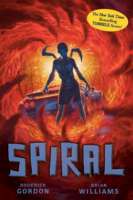
It’s a wild downward SPIRAL and everything’s spinning out of control in the fifth title in the New York Times Bestselling TUNNELS series!Just when you thought it couldn’t get any deeper, darker, or weirder…The Styx have surfaced. Dormant underground for more than a century, the evil, imperious race have crept out into the open through cracks in the earth. And they’re infesting England like a plague of black-clad cockroaches, prepared at last to expose a skin-crawling secret. A secret that’s got Will Burrows completely bugging out!Strapped into steel-toe boots and armed to the teeth with the ammo of a motley crew of weary renegades and cynical ex-soldiers, can he – blam blam splat! – squash the threat?
I, Galileo
I, Galileo Galilei, am old and can no longer see, but there was a time I saw all the way to the stars–the moon, the planets, the sun. Their movements showed me a truth so profound, it changed our view of the entire universe. A truth so unpopular, it would get me into a world of trouble.
Galileo’s inventions and insights were so great that Einstein called him the “father of modern science.” But in his own time, Galileo’s idea of a sun-centered solar system was considered radical and even dangerous–he was branded a heretic, imprisoned in his ome, and banned from discussing science with anyone. In this inspired biopgraphy, Bonnie Christensen lets Galileo himself tell the tale–and his genial narration makes this giant of science feel more real and accessible than ever before. Lavishly illustrated in rich jewel tones, this is a perfect introduction to a most remarkable man.
The Plant Hunters
Driven by an all-consuming passion, the plant hunters traveled around the world, facing challenges at every turn: tropical illnesses, extreme terrain, and dangerous animals. They battled piranhas, tigers, and vampire bats. Even the plants themselves could be lethal! But these intrepid eighteenth and nineteenth century explorers were determined to find and collect new and unusual specimens, no matter what the cost. Then they tried to transport the plants- and themselves- home alive. Creating an important legacy in science, medicine, and agriculture, the plant hunters still inspire the scientific and environmental work of contemporary plant enthusiasts.
Working from primary sources–journals, letters and notes from the field– Anita Silvey introduces us to these daring adventures and scientists. She takes readers into the heart of their expeditions to then-uncharted places such as the Amazon basin, China and India. As she brings a colorful cast of characters to life, she shows what motivated these Indiana Jones-type heroes. In The Plant Hunters, science, history, and adventure have been interwoven to tell a largely forgotten- yet fascinating- story.
Technology of the Ancients: The Romans
This book provides readers with an up-close look at the ingenuity of forward-thinking inventors and engineers from the early civilizatrions
The Chinese

This book focuses on the discoveries and inventions of the ancient Chinese civilization in the areas of transportation, agriculture, architecture, science, and technology.
The Vikings
This book focuses on the discoveries and inventions of the ancient Viking civilization in the areas of transportation, agriculture, architecture, science, and technology.
